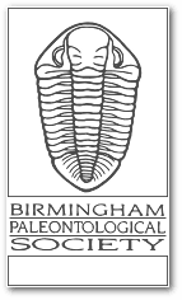Visitor
Paleo in the News
Melting glaciers at the end of the Ice Age may have sped up continental drift, fueled volcanic eruptions
Scientists believe that the motion of Earth's continents through plate tectonics has been largely steady over millions of years. New research, however, suggests this drift can speed up or slow down over relatively short time periods.
Categories: Fossils
Phoenician culture spread mainly through cultural exchange
Ancient DNA analysis challenges our understanding of the ancient Phoenician-Punic civilization. An international team of researchers analyzing genome-wide data from 210 ancient individuals has found that Levantine Phoenician towns contributed little genetically to Punic populations in the central and western Mediterranean despite their deep cultural, economic, and linguistic connections.
Categories: Fossils
Bats that walk backwards have developed unusual navigation strategy
Greater mouse-tailed bats crawl backwards over cave walls, and it seems they use their long tails to help feel their way
Categories: Fossils
Giant coral colony discovered in Red Sea tourism hotspot
A huge colony of Pavona coral near the coast of Saudi Arabia is thought to be the largest living example found in the Red Sea
Categories: Fossils
Can a strange state of matter explain what life is – and how it began?
Laboratory experiments have coaxed simple molecules into states that naturally become more complex, hinting at the origins of evolution itself
Categories: Fossils
How activity in Earth's mantle led the ancient ancestors of elephants, giraffes, and humans into Asia and Africa
What roils beneath the Earth's surface may feel a world away, but the activity can help forge land masses that dictate ocean circulation, climate patterns, and even animal activity and evolution. In fact, scientists believe that a plume of hot rocks that burst from the Earth's mantle millions of years ago could be an important part in the story of human evolution.
Categories: Fossils
How activity in Earth's mantle led the ancient ancestors of elephants, giraffes, and humans into Asia and Africa
What roils beneath the Earth's surface may feel a world away, but the activity can help forge land masses that dictate ocean circulation, climate patterns, and even animal activity and evolution. In fact, scientists believe that a plume of hot rocks that burst from the Earth's mantle millions of years ago could be an important part in the story of human evolution.
Categories: Fossils
Stone Age dog skeleton hints at complex early relationship with pets
A nearly complete skeleton found in a cave in France belonged to a group known as the Palaeolithic dogs and its skeleton suggests it had a confusing relationship with humans
Categories: Fossils
Sunscreen, clothes and caves may have helped Homo sapiens survive 41,000 years ago
A study suggests that Homo sapiens may have benefited from the use of ochre and tailored clothing during a period of increased UV light 41,000 years ago, during the Laschamps excursion.
Categories: Fossils
Images capture the timeless beauty of America's ancient forests
Photographer Mitch Epstein's years-long project highlights the majesty and vulnerability of old growth forests across the US
Categories: Fossils
Secret to crocodylian longevity
Researchers examined teeth and skulls of 99 extinct crocodylomorph species and 20 living crocodylian species to reconstruct their dietary ecology and identify characteristics that helped some groups persist through two mass extinctions. They discovered that one secret tocrocodylian longevity is their remarkably flexible lifestyles, both in what they eat and the habitat in which they get it.
Categories: Fossils
Secret to crocodylian longevity
Researchers examined teeth and skulls of 99 extinct crocodylomorph species and 20 living crocodylian species to reconstruct their dietary ecology and identify characteristics that helped some groups persist through two mass extinctions. They discovered that one secret tocrocodylian longevity is their remarkably flexible lifestyles, both in what they eat and the habitat in which they get it.
Categories: Fossils
Secret to crocodylian longevity
Researchers examined teeth and skulls of 99 extinct crocodylomorph species and 20 living crocodylian species to reconstruct their dietary ecology and identify characteristics that helped some groups persist through two mass extinctions. They discovered that one secret tocrocodylian longevity is their remarkably flexible lifestyles, both in what they eat and the habitat in which they get it.
Categories: Fossils
Living material made from fungus could make buildings more sustainable
Researchers have used a fungus and bacteria to create rigid, living structures similar to bone and coral, which could one day be used as a self-repairing building material
Categories: Fossils
First ever confirmed image of a colossal squid in the deep ocean
The colossal squid is the largest invertebrate on the planet, but it is also surprisingly elusive. An image of a 30-centimetre-long juvenile is our first glimpse of the animal in its natural habitat
Categories: Fossils
Puppy intelligence tests can predict how dogs will turn out as adults
Puppies’ performance in cognitive tests at 3 to 7 months old can give a strong indication of their personalities and trainability as adults
Categories: Fossils
Footprints of tail-clubbed armored dinosaurs found for the first time
Footprints of armored dinosaurs with tail clubs have been identified, following discoveries made in the Canadian Rockies. The 100-million-year-old fossilized footprints were found at sites at both Tumbler Ridge, BC, and northwestern Alberta.
Categories: Fossils
Footprints of tail-clubbed armored dinosaurs found for the first time
Footprints of armored dinosaurs with tail clubs have been identified, following discoveries made in the Canadian Rockies. The 100-million-year-old fossilized footprints were found at sites at both Tumbler Ridge, BC, and northwestern Alberta.
Categories: Fossils
Dolphins are dying from toxic chemicals banned since the 1980s
Polychlorinated biphenyls (PCBs) are commonly found in the bodies of short-beaked common dolphins that get stranded on UK beaches, and are linked to the animals’ risk of infectious diseases
Categories: Fossils
Prehistoric rhinos lived in super-herds
Rhinos that flourished across much of North America 12 million years ago gathered in huge herds, according to a new study.
Categories: Fossils
